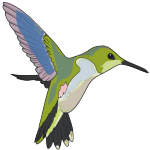Risk of Visual Impairment and ROP in Premature Infants
Recent advances in the treatment of ROP have reduced the risk of blindness, but premature infants are still at risk for vision problems including nearsightedness, crossed eyes, glasse/s, lazy eyes, retinal detachment, blindness and other visual impairments.
By TrezMarie T. Zotkiewicz, RNC-NIC
The tiniest and most premature babies are most at risk for future vision problems. Infants at risk are typically those that have a history of retinopathy of prematurity (ROP). Fifty percent of infants diagnosed with ROP in the NICU show decreased visual acuity, myopia (nearsightedness), glaucoma (an increase in eye pressure), strabismus (crossed eyes), and amblyopia (a lazy eye) in early childhood.
More that likely, if your baby was significantly premature, he will need glasses at some point in his life, since more than 85% of preterm infants and children become myopic (nearsighted) - 20% by 1 year of age. For babies with severe (threshold) ROP, most will have serious visual impairments, even with glasses, resulting in developmental challenges as well. The potential for late retinal detachment is even greater in this population. And finally, blindness has been reported in approximately 6% of ELBW infants.
Fortunately, recent advances in the treatment of ROP have greatly minimized the number of infants with severe ROP and/or blindness. Infants born after 28 weeks weighing more than 3 pounds, 5 ounces (1,500 grams) have a very low risk of ROP compared with infants born weighing less than 2 pounds, 4 ounces (1,000 grams). Occasionally, LBW infants (weighing less than 2,500 grams) will develop ROP as a result of an unstable NICU course.
Visual problems may also occur as a result of IVH, periventricular leukomalacia (PVL), neonatal infections, or other neonatal medical conditions. Cortical visual impairment or blindness may result from a serious IVH or other injury to the brain. In other words, the eyes may be able to "see," but the brain cannot interpret or understand the picture being sent.
The American Academy of Pediatrics has a protocol for routine ophthalmology screening of premature infants based on gestational age that is done at regular intervals while in the NICU. Follow-up visual examinations must be continued on schedule once our baby goes home in order to optimize functional vision and minimize problems. These follow-up eye appointments will ideally be scheduled for you prior to your baby's discharge.
It is important that you know when your baby's follow-up eye appointments are due so you do not miss any appointments. Timing is everything! It is not acceptable to wait a week or two past the scheduled due date for your baby's eye appointments. For babies with suspected cortical vision problems, developmental follow-up and early intervention referrals will also be necessary.
